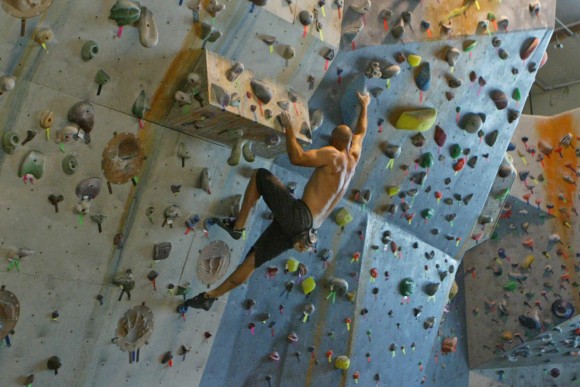By: ATLX Expert Brett Stewart
Getting Started
They’re called “Mud RUNS” for a reason, right?
I’ve yet to see an event with escalators or conveyer belts to transport you from one obstacle to the next, so prepare to do some running or jogging when you sign up for a mud run or obstacle race. In fact, all of these events measure their courses in distance–from 5K to as much as 26.2 miles—and you’ll need to cover all that ground as quickly as you can before tackling each and every obstacle standing in your way.

99% of the courses you’ll encounter are off-road, so your best bet is to train on similar conditions –
that means trails!
Trail running is much more challenging than a simple jog on the road—every footfall will result in uneven terrain with rocks or ruts while the elevation can change significantly from one stride to the next.
Your hips, ankles, and core get more work than they ever would on a sidewalk, and every supporting muscle you never considered is forced to carry some of the load to keep you on your feet while sprinting across the undulating landscape.
Trail Intervals
Start out with a hike, then progress to a brisk walk and a run over the course of a few days or weeks – depending on your previous athletic experience and level of conditioning.
If you’re just off the couch, then here’s a pretty good method to progressively build up your distance: Perform these progressive intervals 3 times a week with at least 1 day rest in-between:
Walk 5 minutes to warm up. Take a couple minutes and stretch your lower back and hamstrings – slowly bend forward and touch your toes, don’t bounce. Pause in the down position for 5 seconds, stand up straight. Each rep, reach a little farther towards your toes or straight down to the ground. If you’re really flexible, bring your forehead to your knees!
Use a tree or fencepost to stabilize and alternate single leg swings, side to side and front to back to loosen up your hips and glutes. Using the same pole to support yourself, stand on one leg and raise the other knee up to your chest, use your free arm to wrap around the shin and gently hug your knee to your torso.
Lastly, find a rock or step to stretch your calves; place the toes of one foot at a time on the curb and stretch your gastrocnemius by lowering your heel to the ground slowly. Don’t bounce, pause at full flexion for 3-5 seconds, release and repeat 3-5 times on both feet.
Now shake out your arms and legs and get ready to perform some jog/walk intervals for as long as you can. Since everyone’s fitness is different, these intervals are up to you – just don’t overdo it too quickly.
Walk for 1:00, jog for :20, repeat as many times as possible. Remember the number of intervals you did as a baseline, this will be the same number you repeat for the next 2 workouts this week. The following week you’ll add 1-2 more intervals and repeat that process again on week 3.
Starting with week 4, drop :10 off the walk time and add to your jog time: Walk :50, Jog :30 (repeat as many times as week 3). Do the same for weeks 5 and 6, drop/add :10 from each time.
Week 7, leave your timer at home. Your goal now is to jog as long as you can continuously and walk when you need to recover.
Now you’re a trail runner.
Keep it up by adding distance and time – but not more than an additional 10:00 to each run or 1 mile per week total distance.
 ATLX The only sports entertainment television and digital media network fully devoted to everyday athletes, athletic lifestyle and athletic culture.
ATLX The only sports entertainment television and digital media network fully devoted to everyday athletes, athletic lifestyle and athletic culture.




